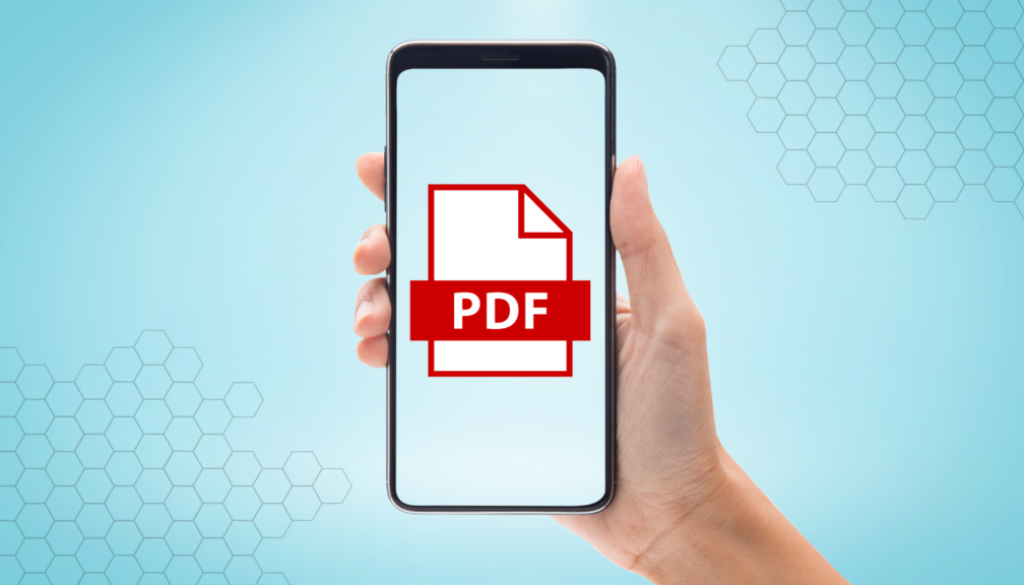Designing User-Friendly PDFs for Mobile Devices on Websites
With the widespread use of smartphones and tablets, website owners must ensure that their PDF documents are user-friendly and easily accessible on mobile devices. PDF (Portable Document Format) files are widely used for sharing important information, reports, and documents on the web. However, the default design of PDFs may only sometimes provide an optimal reading experience on smaller screens. The following are several techniques for designing user-friendly PDFs for mobile devices on websites.
Responsive Layout
One of the fundamental principles of designing user-friendly PDFs for mobile devices is to create a responsive layout. A responsive layout ensures that the PDF adapts to different screen sizes and orientations, providing an optimal reading experience on mobile devices. The PDF itself cannot change but the widget or viewer in it can. If you expect many mobile viewers, consider using a single-column layout on the PDF with larger font sizes and ample white space to enhance readability. The other option is to present two different PDFs, one if they are viewing desktop and another for mobile. This will ensure the highest user experience but does take a lot more time.
Clear Navigation
PDF documents often contain multiple pages, sections, or chapters. Designing a clear and intuitive navigation system is essential for mobile users to navigate through the document easily. Provide a table of contents or clickable links within the PDF, allowing users to jump directly to the desired section or page. This helps in avoiding the need for excessive scrolling, which can be cumbersome on mobile devices. Resource Center has a unique search function to help the user find specific phrases, even across multiple PDFs. Most other website embedding software does not allow for this.
Font Size and Type
Optimize the font size and type for mobile devices to ensure comfortable reading. Use a legible font type that is compatible across different devices and operating systems. Additionally, increase the font size slightly compared to a desktop version to compensate for smaller screens. Aim for a font size that allows users to read the text without zooming in excessively. Size 16 has research to back up that it is adequate and readable.
Mobile-Friendly Images
Images play an important role in enhancing the visual appeal of PDF documents. However, high-resolution images can significantly increase the file size and slow down the loading speed on mobile devices. Optimize images for web use by compressing them without sacrificing too much quality. Consider the content and context of the images. Are they necessary to communicate the message? Sometimes, we can add photos just for filler, and that’s not always a great solution.
Minimize File Size
Mobile devices often have limited storage space and slower internet connections. It is crucial to minimize the file size of PDF documents to ensure quick loading times and avoid consuming excessive data. Compress images, remove unnecessary elements, and optimize the PDF settings to reduce the file size without compromising the readability or quality of the document. Resource Center automatically optimizes some functions, but its best to keep a PDF at no more than 100 MB.
Touch-Friendly Elements
Mobile devices rely on touch interactions, so designing PDFs with touch-friendly elements is important. Ensure that buttons, links, and interactive elements have sufficient spacing and are easy to tap without accidentally activating adjacent elements. People are using a finger, not a mouse, on a mobile device. Use larger buttons or clickable areas to accommodate finger taps accurately.
Don’t Complicate it with Fancy Features
Flash-based content and complex animations are often incompatible with mobile devices, as they may require specific plugins or software. Animations in general tend to be less reliable. Even videos or GIFs are technically possible in a PDF but are not advisable. Instead, use simple and lightweight interactive elements that work well across different platforms. If your PDF needs additional plugins to view it, you are defeating the entire purpose of the platform.
Testing and Optimization
Before publishing a PDF document on a website, thoroughly test its compatibility and user-friendliness on various mobile devices and operating systems. Use emulators or testing tools to simulate different screen sizes and platforms to identify any issues or inconsistencies. Make necessary adjustments and optimizations based on the test results to ensure a smooth experience for mobile users.
This is the most critical step. If you cannot look at it objectively, get a coworker or significant other to review the PDF. Don’t say anything other than give them a few short objectives. If they struggle to find something or click elements, that’s crucial information you are not ready to publish. If they struggle, so will others.
Ready to Publish a PDF?
Designing user-friendly PDFs for mobile devices on websites requires careful consideration of responsive layouts, clear navigation, appropriate font sizes, optimized images, minimized file sizes, touch-friendly elements, and compatibility testing. By implementing these techniques, website owners can enhance the accessibility and readability of PDF documents, providing a seamless experience for mobile users and ensuring that important information can be easily accessed on the go.




